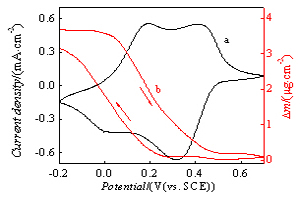

PANI-SnP复合膜电极在镍镉废水中电控离子交换性能
收稿日期: 2012-12-25
修回日期: 2013-01-11
网络出版日期: 2013-01-16
基金资助
国家自然科学基金(No. 20676089),山西省自然科学基金(No. 2012011020-5, No. 2012011006-1),山西省国际科技合作计划项目(No. 2011081028)资助
Electrochemically Switched Ion Exchange Properties of PANI-SnP Composite Films in Wastewater Containing Ni2+ and Cd2+
Received date: 2012-12-25
Revised date: 2013-01-11
Online published: 2013-01-16

关键词: 电化学控制离子交换; 电活性聚苯胺-磷酸锡; 复合膜材料; 镉(II)分离
冯艳婷 , 肖俊强 , 郝晓刚 , 马旭莉 , 王忠德 , 韩念琛 . PANI-SnP复合膜电极在镍镉废水中电控离子交换性能[J]. 电化学, 2013 , 19(4) : 322 -327 . DOI: 10.61558/2993-074X.2116

/
| 〈 |
|
〉 |